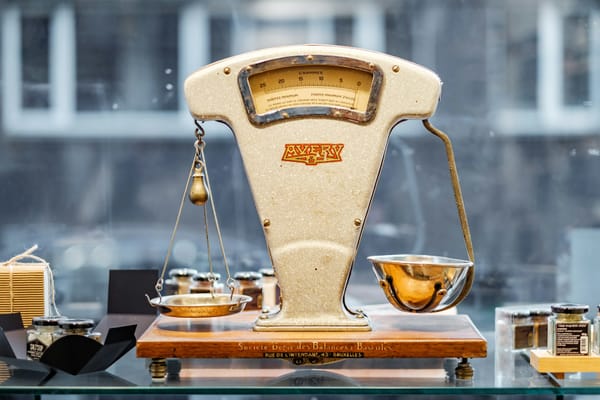The fight for pay equity has raged on for decades, but what is the real state of the gender pay gap for product marketers in the US in 2024?
At the end of 2023, we surveyed hundreds of product marketers in the US to get a better understanding of how much product marketers earn across the states. We were able to break down our findings into many different categories, one being a comparison of how much women earn in product marketing relative to their male counterparts.
To get a clearer understanding of the factors impacting gender pay, we looked at the differences between male and female pay across different seniority levels. To do this, we compared average total compensation, average base salary, and median salary across six different role levels.
What did we find?
We found that men reported higher median salaries than women for Product Marketing Managers, Associate Product Marketing Managers, and Senior Product Marketing Managers. However, at the Director of Product Marketing and Manager of Product Marketing levels, which tend to be more lucrative roles, women actually had higher compensation.
Women in these senior positions received higher average base pay and median overall compensation packages, partially due to being granted more stock options.
But let’s break this down further.
Contents:
- Gender disparity
- Role specific disparities
- Potential factors contributing to disparities
- Industry-wide implications
- Industry initiatives
- A summary of our analysis
N.B. Our research was based on three key statistics - baseline salary, annual bonus and stock, and then total compensation (baseline salary, bonuses, and stock options). These are all before taxes.

Gender disparity
In 2022 we found, on average, that men’s average total compensation was $190,035, around 9.9% higher than for female respondents. Male base salaries were on average 10.9% higher ($158,581 vs. $142,985), and men received more in annual bonuses than women by a whopping $6,173.
It seems that both male and female product marketers are earning less than in 2022; bonuses are the exception to this trend, , which have risen slightly for women in 2023.
With male base salaries falling 7% year-on-year, the overall gender pay gap has narrowed over the last 12 months.
Today, male base salaries are, on average, just 3% higher than those of females, revealing an overall gap in total compensation of just over 6%.
Role-specific disparities
The data highlights a consistent trend of men earning higher total compensation, base salary, and median salary compared to women in various product marketing roles.
This suggests a gender pay gap within the industry, with men generally receiving more favorable compensation packages.
The disparity in total compensation is more pronounced in higher-level roles, such as VP of Product Marketing, indicating a potential glass ceiling effect where women face greater challenges in reaching top executive positions and earning comparable salaries.
We did find that women Product Marketing Managers earn approximately $7,000 less than men in the US. This shows that the lower and mid-level positions, like Associate Product Marketing Manager or Product Marketing Manager, also exhibit gender pay gaps but to a lesser extent compared to senior and executive roles.
Potential factors contributing to disparities
Factors such as negotiation skills, career advancement opportunities, and implicit biases may contribute to the observed differences in compensation between genders.
Could it be that women are entering negotiations with lower salary expectations or facing larger barriers to career progression?
When turning to median annual salary, the gap between men and women is less pronounced, with male median pay sitting at $140,500 compared with $140,000 for women.
In 2022, by contrast, we saw a much larger contrast in median pay, with $135,750 for female respondents, and $150,000 for males. Encouragingly, this suggests that the median pay gap between men and women has fallen 96% in the last year.
But the big driver of that is a collapse in male earnings. Is this a result of layoffs with the highest earners being let go rather than an active effort in reducing this disparity?
However, there are other factors that could be contributing to this difference in pay, like how much experience someone has within their role. So, we looked deeper into these numbers and found:
Manager of Product Marketing:
- Female: An average of 8 years of experience earned a $148,500 median salary
- Male: An average of 4.5 years of experience earned a $140,500 median salary
Associate Product Marketing Manager:
- Female: An average of 1 year of experience earned a $92,140 median salary
- Male: An average of 1.83 years of experience earned a $104,600 median salary
Director of Product Marketing:
- Female: An average of 8.74 years of experience earned a $185,000 median salary
- Male: An average of 9.2 years of experience earned a $180,000 median salary
Product Marketing Manager:
- Female: An average of 3.82 years of experience earned a $113,000 median salary
- Male: 6.46 years of experience earned a $120,000 median salary
Senior Product Marketing Manager:
- Female: An average of 6.24 years of experience earned a $150,000 median salary
- Male: 5.88 years of experience earned a $160,000 median salary
VP of Product Marketing:
- Female: An average of 9.67 years of experience earned a $200,000 median salary
- Male: An average of 12.88 years of experience earned a $222,500 median salary

In some roles, there is a trend of men having higher median annual salaries despite having lower average years of experience (e.g., Manager of Product Marketing, VP of Product Marketing).
In other roles, men tend to have higher average years of experience and, consequently, higher median annual salaries (e.g., Associate Product Marketing Manager, Product Marketing Manager, Senior Product Marketing Manager).
The relationship between gender, years of experience, and median annual salary varies across different job titles. For example, in the Director of Product Marketing role, women have both higher average years of experience and median annual salary than men.
It’s important to note that salary disparities like these could likely be influenced by various factors beyond gender and experience, such as education, specific job responsibilities, and geographical location. Plus, other external factors could contribute to it, like having a more generous employer, being someone who can negotiate your salary more effectively, and so on.
Industry-wide implications
The data suggests that the gender pay gap is not uniform across all job titles and levels within the product marketing field. Employers in the industry should critically assess their compensation structures, promotion practices, and inclusion efforts to create a more equitable work environment.
Let’s look further into the industry-wide implications of a gender pay gap.
Talent retention and attraction
A persistent gender pay gap may negatively impact talent retention and attraction. If women perceive disparities in compensation, they may be less likely to stay with their current employers or be discouraged from entering the field altogether. This can limit the pool of available talent and hinder diversity within the industry.
Reputation and employer branding
Companies with a reputation for gender pay disparities risk damage to their employer brand. Potential employees, especially those from underrepresented groups, may prefer organizations that are known for their commitment to equity and inclusivity. A positive employer brand can be a competitive advantage in attracting top talent.
Employee morale and productivity
A gender pay gap can contribute to lower employee morale, particularly among women who may feel undervalued. This dissatisfaction can impact productivity, collaboration, and overall workplace satisfaction. Conversely, addressing and rectifying pay disparities can lead to a more engaged and motivated workforce.
Legal and regulatory compliance
In many regions, there are laws and regulations in place to address gender pay gaps - just like the Equality Pay Act of 1963.
Companies that fail to address these disparities may face legal consequences and reputational damage. Proactively addressing pay equity is not only ethically sound but also aligns with legal compliance.
Innovation and creativity
Diverse and inclusive teams have been shown to foster innovation and creativity. A gender-diverse workforce brings different perspectives, ideas, and approaches to problem-solving. Closing the gender pay gap can contribute to a more diverse and innovative industry, leading to better products and services.
Corporate social responsibility (CSR)
Companies are increasingly expected to demonstrate a commitment to corporate social responsibility. Addressing gender pay disparities aligns with CSR goals, signaling to stakeholders, customers, and the public that the organization values diversity, equity, and fair treatment of employees.
Long-term business success
Organizations that prioritize gender equity tend to be more successful in the long run. A diverse and inclusive workplace fosters creativity, resilience, and adaptability, which are essential qualities for navigating a rapidly evolving industry. Companies that fail to address gender pay gaps may risk falling behind in terms of innovation and competitiveness.
Benchmarking and best practices
Industry leaders can play a crucial role in setting benchmarks and best practices for addressing gender pay disparities. Sharing successful strategies for promoting diversity and closing the pay gap can encourage other companies to follow suit, contributing to positive change across the entire industry.

Industry initiatives
Organizations in the product marketing industry should consider implementing diversity and inclusion initiatives, mentorship programs, and transparent salary structures to address and rectify gender disparities.
Here are some examples:
Transparent compensation policies
Establishing transparent compensation policies helps eliminate wage gaps by providing clarity on how salaries are determined. Open communication about pay structures fosters trust and ensures that employees understand how their compensation is determined.
Equal opportunity programs
Implementing programs that ensure equal opportunities for career advancement and leadership positions can address the imbalance observed in higher-level roles. Companies can establish mentorship and sponsorship programs to support the professional growth of underrepresented employees.
Regular pay equity audits
Conducting regular pay equity audits helps identify and rectify gender pay disparities. These audits should be comprehensive, considering factors such as job responsibilities, experience, and education to ensure a fair and unbiased assessment.
Diversity, equity, and inclusion (DE&I) training
Providing training programs on DE&I can help raise awareness of unconscious biases and foster a more inclusive workplace culture. This can contribute to creating an environment where all employees feel valued and have equal opportunities for success.
Employee resource groups (ERGs)
Establishing employee resource groups focused on gender diversity can provide a supportive community for employees, facilitate networking opportunities, and contribute to a more inclusive workplace.
Flexible work policies
Implementing flexible work policies, including remote work options and flexible scheduling, can help accommodate the diverse needs of employees, especially those balancing family responsibilities. This can contribute to retaining and attracting a more diverse talent pool.
A summary of our analysis
This analysis of gender disparities in product marketing reveals a trend of men earning higher compensation. Although both male and female product marketers saw a decline in earnings in 2023, the gender pay gap narrowed to just over 6%, primarily driven by a 7% decrease in male base salaries.
Role-specific disparities persist, with men consistently earning more in various positions, highlighting a potential glass ceiling effect in higher-level roles like VP of Product Marketing. The data also indicates that women in lower and mid-level positions, such as Product Marketing Managers, experience gender pay gaps, though to a lesser extent.
Factors contributing to these disparities include negotiation skills, career advancement opportunities, and potential biases. Notably, the reduction in the median pay gap is attributed to a collapse in male earnings, raising questions about whether this is due to layoffs or active efforts to address the gender pay gap.
In examining the relationship between experience, gender, and median salary, variations across different roles emerge. For instance, in some roles, men have higher median salaries despite lower average years of experience, while in others, higher experience contributes to higher salaries.
It's crucial to note that beyond gender and experience, various factors like education, job responsibilities, and geographical location likely influence these salary disparities.
But ultimately, perhaps the most important takeaway is that by fostering an inclusive workplace culture, companies can create an environment where all employees, regardless of gender, have equal opportunities for career growth and fair compensation.
Did you know, in the same survey we discovered that those who were product marketing certified were earning on average $3,113 more than those who aren't?
Sign up to Product Marketing Certified: Core.
And if you've already done that, sign up to Product Marketing Certified:Advanced.


 Follow us on LinkedIn
Follow us on LinkedIn

